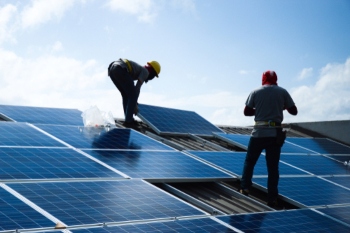
The majority of the solar panels required to reach the Government’s net zero targets could be fitted on rooftops and car parks rather than in the countryside, campaigners say.
The Government has set a national target of 70GW of solar energy generation by 2035 as part of the effort to reduce carbon emissions.
A new study by University College London’s Energy Institute has found that installing solar panels on existing rooftops and car parks could provide at least 40-50GW in England by 2035.
Commissioned by the countryside charity CPRE, the study also suggests that with further investment there is potential for up to 117GW of low carbon electricity to be generated from roofs and other developed spaces by 2050.
CPRE is calling on the Government to ensure all suitable new buildings have rooftop solar as standard.
Roger Mortlock, chief executive of CPRE, said: ‘We are missing a trick in failing to install more solar panels on roofs and car parks. Rooftop solar has almost universal public support. It’s unobtrusive and largely out of the line of sight, which means less objections and a speedier passage through the planning system.’
Prof. Mark Barrett of the UCL Energy Institute, lead author of the research, said: ‘It’s clear we can get close to meeting the Government’s solar energy target without necessitating the development of large solar farms in sensitive rural areas. Urban photovoltaic panels on car parks, and new and large buildings, would be relatively cheap although retrofitting solar panels onto existing homes would be more costly.’
Sign up here to recieve our free daily news and jobs bulletin.












